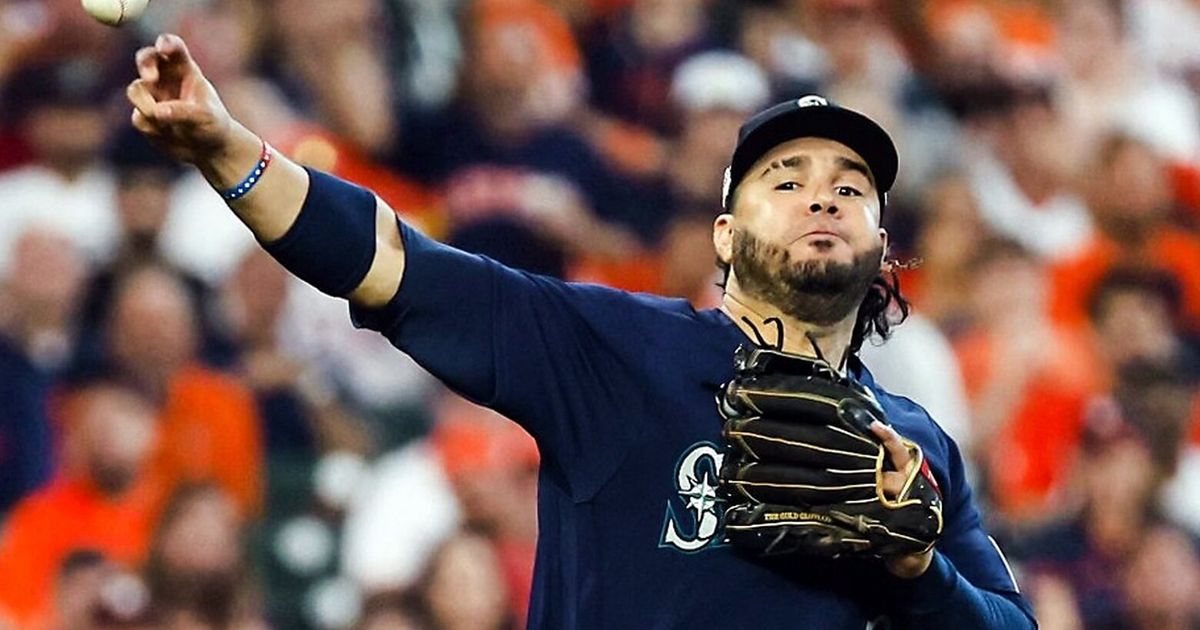
Perhaps it was around July when most people stopped calling it the Jesse Winker trade and started referring to as the Eugenio Suarez trade.
The contrasting production being provided by the two players made such a label switch a reality if not a necessity.
Back on March 14, 2022, the first official day of workouts for a delayed spring training, the Mariners, desperate for proven major league hitters, acquired Winker and Suarez from the Reds in exchange for outfielder Jake Fraley, right-handed pitcher Justin Dunn, left-handed pitching prospect Brandon Williamson and a player to be named later, which was right-handed pitching prospect Connor Phillips.
At the time, Winker was considered the centerpiece of the deal. After all, he was coming off a brilliant All-Star season in 2021 where he posted a .305/.394/.556 slash line* with 32 doubles, 24 homers, 77 runs scored, 71 RBI, 53 walks and 75 strikeouts.
Meanwhile most people in baseball viewed the acquisition of Suarez as the cost for acquiring Winker. With the Reds looking to shed payroll, finding a team to take Suarez and the remaining $35 million on his contract was a key goal.
The Mariners, who had a hole at third base, were happy to take Suarez, who was coming off a down 2021 season, if it meant getting Winker.
“He had a very good second half after a really tough start,” Dipoto said the day of the trade. “He’s been one of the most consistent power hitters in the league. He’ll get his everyday reps.”
But as Winker butchered balls in the outfield, struggled at the plate to replicate his 2021 success and seemed miserable with the Mariners, Suarez exceeded expectations at the plate, showed significant improvement at third base and his “good vibes only” approach to the game blossomed into a cornerstone player and team leader.
“The good players — the great players — want to be coached,” manager Scott Servais said late last season. “They always want to get better. Geno’s at a point in his career, new organization, new set of eyes, where he said, ‘Yeah, I’ll listen to what these guys say.’ And all of a sudden, you start seeing the results.”
Suarez posted a .236/.332/.459 slash line in 150 games and 629 plate appearances with 24 doubles, two triples, 31 homers, 76 runs scored, 87 RBI, 73 walks and a league-high 196 strikeouts. Per FanGraphs, Wins Above Replacement metric (fWAR), Suarez generated 4.1 wins with only three other third baseman in the American League producing higher fWAR numbers. Only Atlanta’s Austin Riley (38) and Manny Machado (32) hit more homers.
He was also productive when the Mariners needed him most. From Aug. 1 to the end of the season, including stretched with Julio Rodriguez injured, Suarez posted a .247/.340/.553 slash line with five doubles, a triple, 15 homers, 30 runs scored, 35 RBI in 48 games and 197 plate appearances. The Mariners finished 30-18 in that stretch. The numbers might have been better, but Suarez suffered a broken right index finger on Sept. 16 and was placed on the 10-day injured list a day later. He missed only nine games, returning to serve as the DH to help the Mariners clinch their postseason spot in 21 years.
In the third installment of our Mariners position overviews, here’s a look at third base:
Suarez, who turns 32 in July, made the process of replacing Kyle Seager, a stalwart at third base for a decade, look relatively easy in terms of production and presence.
Can he be even better this season?
The Mariners believe the defensive improvement from working with Perry Hill in 2022 will continue to grow in 2023. As for the production at the plate, Suarez will never be a high average hitter, though the Mariners believe he can be closer to a .265 hitter and trim down the regularity of the strikeouts. But they will accept some swings and misses if it means that the moments of contact produce extra base hits and homers. Suarez has belted more than 30 homers in each of the last four “full” seasons.
Beyond the fluke finger fracture, Suarez was always available. He played in 142 of the Mariners’ first 143 games before suffering the injury. He still played in 150 games, which was second only to Adam Frazier.
The Mariners will likely try to get him a few more “off” days by using him at designated hitter.
Dylan Moore is a more than capable fill-in at third base and Seattle could also use recently-signed infielder Tommy La Stella at third base if needed.
Suarez is under contract through the 2024 season, making a relatively economical $11 million this season and next season. The Mariners have a $15 million club option for Suarez in 2025 that includes a $2 million buyout. If Suarez can produce to the similar levels of 2022, he would be considered a bargain by baseball standards.
By 2025, the Mariners might have a replacement ready to take over the position.
Could they shift top prospect Harry Ford, who is blocked by Cal Raleigh at catcher, to third base? Ford certainly has the athleticism for such a move.
Tyler Locklear, who was selected in the second round of the 2022 draft out of Virginia Commonwealth, is a third baseman. But many scouts believe he will eventually transition to first base due to defensive limitations.
Milkar Perez, a switch-hitter who was once considered a potential third baseman of the future, struggled at Low-A Modesto last season.
Starlin Aguilar, who played at the Arizona Complex League at age 18, is a high-upside young prospect with some potential.
Triple-A Tacoma
- Jason Vosler
- Drew Ellis
Double-A Jackson
- Robbie Tenerowicz
- Jake Scheiner
High-A Everett
- Tyler Locklear
- Ben Ramirez
Low-A Modesto
- Starlin Aguilar
- Milkar Perez
Arizona Complex League
- Josh Hood
- Luis Suisbel